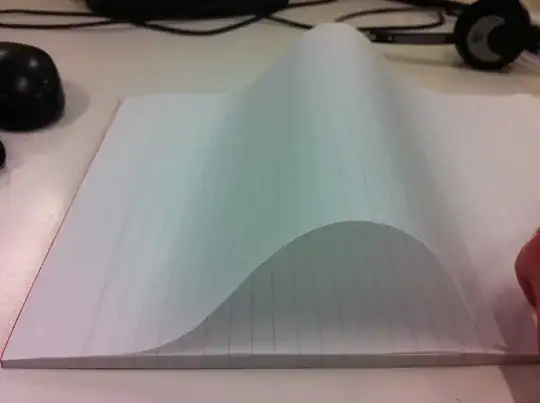When I push a piece of (A4) paper oriented landscape to me from the shorter edges, it makes a pretty shape, resembling a bell-curve. I seem to remember these sort of situations being a motivation for or concrete instance of some theorems in differential geometry, but apart from that I have no idea how to determine what the true shape of the paper in this situation.
Not a great example (as I'm pushing with one hand to take the photo) but similar to what I'm after. (Hey, if you can generalize to a one-sided push I might just award the checkmark!)
